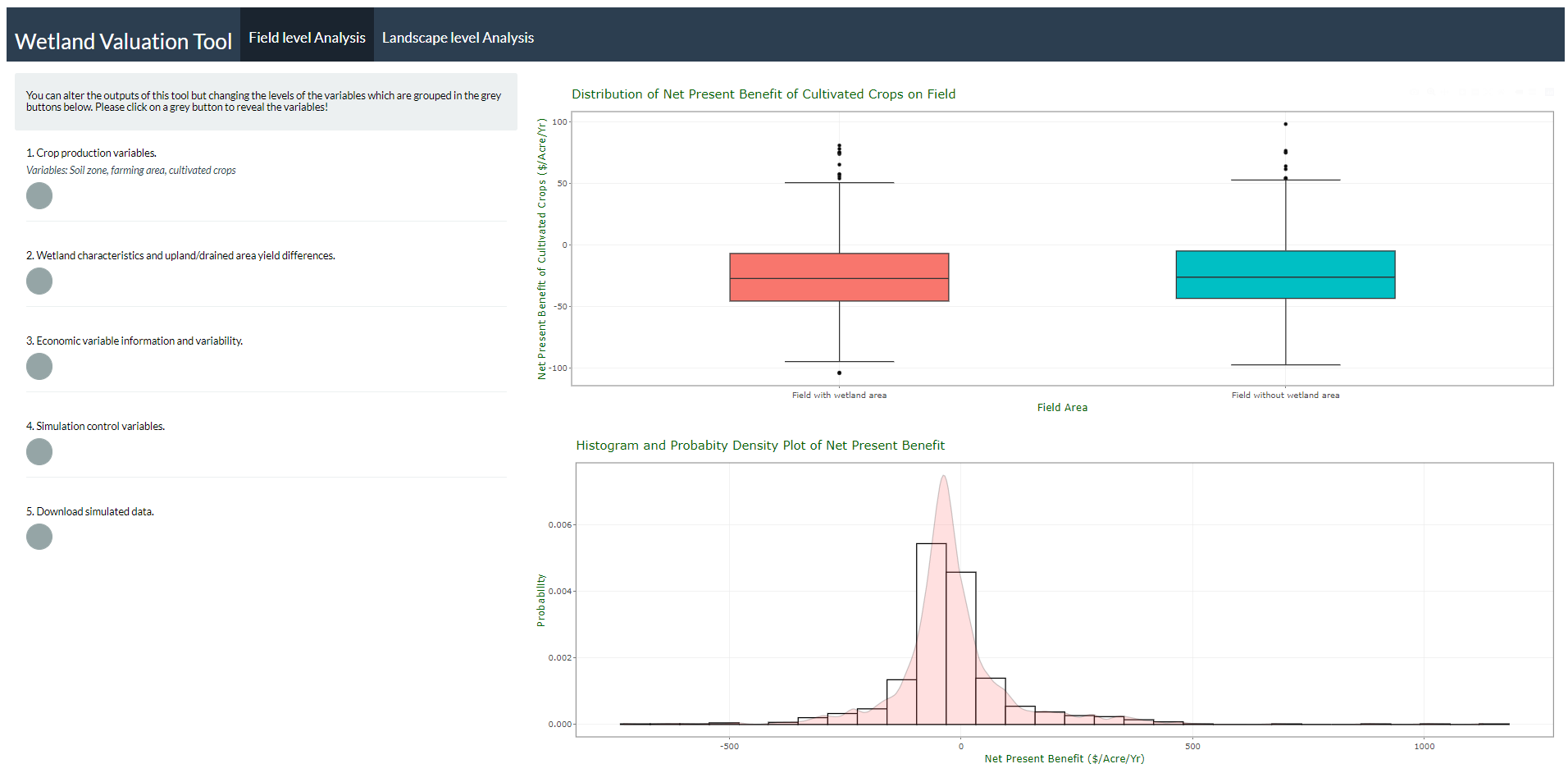Progress
A test version of a web-based tool has been developed. Currently the tool helps assess the costs and benefits of draining wetlands on agricultural land in terms of crop revenues. Further development of the tool will include ecosystem services in the cost/benefit assessment.
Reason for development
Currently there is no formal tool for assessing the costs and benefits of draining wetlands on agricultural land. Experience and intuition allow producers to make these decisions at the field level, however, it is challenging at a policy level to predict drainage behaviour. There is also currently no reliable method of including ecosystems and the services they provide into a cost/benefit analysis of wetland drainage on agricultural lands.
Applications
Cost benefit analysis to predict drainage behaviour. Extending the cost/benefit analysis of drainage decisions to account for the ecosystem service benefits to wider society. Supporting conservation policy decisions.
Summary
Geophysical, climatological and, economic factors, and associated uncertainty implies that there is no single ‘cost’ of wetland conservations to producers. Additionally, the people who make wetland management decisions often have important, real-time, field specific information that can’t be modelled. The initial aim of the wetland conservation costs tool is to provide a comparison between producer net returns on fields with intact wetlands and drained wetlands.
The Wetland Conservation Costs tool focuses on fields with annual crop production and seeks to balance useability with number of factors considered i.e., too many factors will make the tool unusable, too few will make it unreliable. The tool is ‘user-driven’ using data from a survey of 457 producers across the Prairie Provinces. We use these user-specific data in the design of the tool to better understand how and why producers make wetland related decisions on the ground, the less tangible costs and benefits that influence those decisions and producer policy instrument preferences.
Currently the tool focuses on the cost/benefits of wetland drainage or retention to producers. However, as we develop it further, we will start to integrate ecosystem cost and benefits to wider society.
For further information, contact Dr. Pat Lloyd-Smith.


